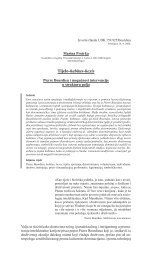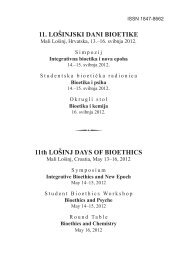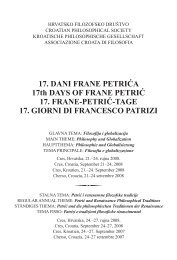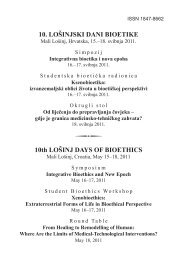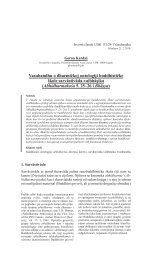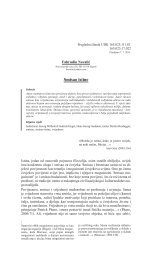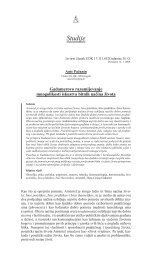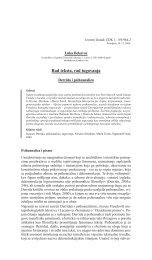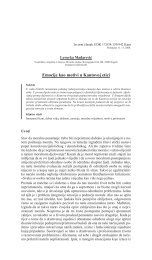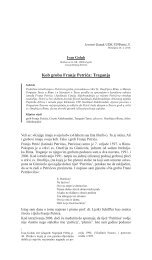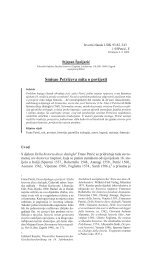Programska knjižica - Hrvatsko filozofsko društvo
Programska knjižica - Hrvatsko filozofsko društvo
Programska knjižica - Hrvatsko filozofsko društvo
You also want an ePaper? Increase the reach of your titles
YUMPU automatically turns print PDFs into web optimized ePapers that Google loves.
of seas and oceans of his time. Patricius identified the attraction of the Moon<br />
and Sun as the first two general tidal causes, especially their respective positions<br />
in the sky as well as the influence of lunar and solar light on the tides. In<br />
the famous book Concepts of Force by Max Jammer, the name of Franciscus<br />
Patricius and his treatise on tides are mentioned on p. 83, which had been of<br />
primary importance to Kepler in his attempts to formulate the universal character<br />
of attraction, which is rigorously asserted to Newton only. In his Letter to<br />
Herwart von Hohenburg (end of January 1607) regarding the lunar theory of<br />
tides, Kepler quoted the work of Patricus.<br />
Despite Jammer’s comments that Patricius had an indirect role in Kepler’s<br />
attempt to formulate the universal character of gravity, Patricus failed to grasp<br />
epistemologically the meaning of gravity (a force due to masses of celestial<br />
bodies) in the second part of the 16th century, but ascribed the cause of the<br />
tides to light and heat (lux and calor) within the framework of his general philosophy.<br />
However, by the effective contemporary approach to Patricius’ role,<br />
it is worthwile to say that Patricius is still notable for his description of different<br />
sea motions, their variability and local dependence according to empirical<br />
observations, which are very close to modern observations (stations for the<br />
measurements of tides, satellite observations).<br />
Newton was one of the first and one of the greatest synthesisers and unifiers<br />
of the natural laws of all times. He formulated the synthesis of motion by<br />
axioms and definitions, and celestial mechanics and the law of falling on the<br />
Earth were unified by the single same force: universal law of gravity. Besides<br />
these discoveries, Newton himself strongly believed in the unity of nature and<br />
human power to conceive of such a unity. Beyond Newton’s Principia as the<br />
masterpiece of classical physics, Boscovich’s Theory of Natural Philosophy<br />
(Vienna 1758 and Venice 1763), starting form Newtonian physics and Leibniz’s<br />
monadology, gave a refined dynamical picture of natural unity.<br />
Roger Joseph Boscovich was the first to use Newton’s method of reasoning,<br />
along with that of Descartes, Spinoza, and Leibniz, synthesizing them into<br />
his new original method of thinking of Nature. His method may be expressed<br />
by the epistemological formula of “more geometrico sive mathematico – more<br />
rationali – more empirico – more theologico,” as the four basic concepts of<br />
science, philosophy and religion that have been unified together for the first<br />
time by Boscovich’s mind. Boscovich held that all matter we see around us is<br />
made up of points (puncta) by the single universal law of forces, fulfilling thus<br />
the very old dream of atomistic philosophy and science. Depending on their<br />
distances in the space, forces between the puncta (atoms) can attract or repel<br />
(curva Boscovichiana), regardless of whether elementary particles or the entire<br />
174



